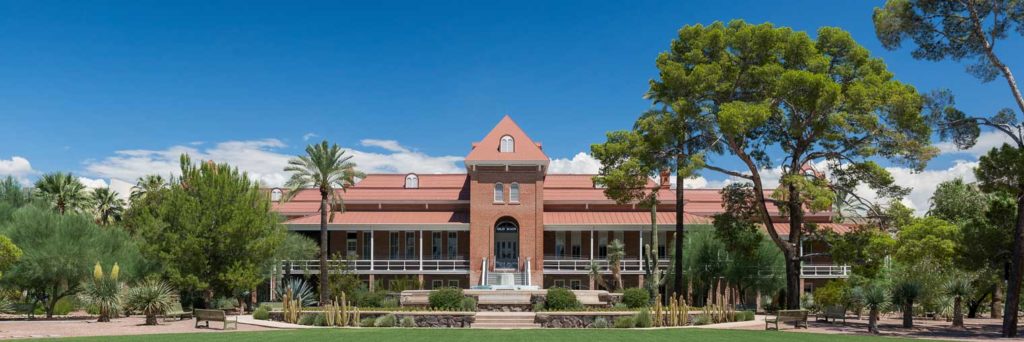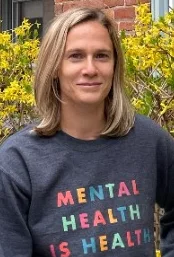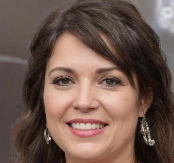From the very first essays received, it became clear that education about drug and alcohol addiction is sorely lacking in our country. The many shortcomings of the D.A.R.E. program were mentioned again and again, and the following essays present a number of solid alternatives to law enforcement providing lessons on a social issue. Education to curb addiction in our country represents a real need, and these student writers have done a terrific job of addressing this gap.
These five submissions in the first part of our ‘Education Resources to End Addiction’ section presents a number of viable options, from reducing the glamor surrounding drugs in pop culture to better and more widespread peer support offerings. But we don’t want to give too much of the insights shared by students away, read on to find their amazing thoughts and perspectives on these vital issues.[/vc_column_text]
1. Christine Danforth (Western Oregon University)
The reduction of addiction in the US takes a multi-factored approach. There is no ONE thing that is going to slow the spread, because it is a systemic problem. There are many reasons why people use substances, including coping with physical and emotional pain and distress, shame, social acceptance, managing anxiety, loneliness, and boredom, among others.
This can stem from trauma of all types, either acute or cumulative. Some people believe addiction disease theory, while others think it is a genetic predisposition triggered by circumstances. In a utopian world, people would be protected from trauma, pain and emotional distress, and encouraged to connect, love each other and themselves so they wouldn’t want or need to use substances, but this is unrealistic.
Reducing the Appeal of Intoxication via Popular Culture
Table of Contents
- Reducing the Appeal of Intoxication via Popular Culture
- Removing Taboo From Conversations on Addiction
- Education to Curb Addiction: A Social Media Component
- The Physiological Basis for Addiction
- Education to Unlock Informed Choices
- Introduction to Education Against Addiction
- Educational Tools for Substance Misuse
- Concluding Comments
- Personal Beliefs about Changing Addiction in America
- Education to Curb Addiction: Peer Support Counselors
- Stimulus Checks to Promote Addiction Treatment
- Ending the Drug Epidemic
- What could happen to address addiction
- What is happening to address addiction
- Medically Reviewed By
One proactive idea is to de-glamorize drugs, alcohol in particular. Ads and movies are filled with images that permeate our lives about social drinking, mommy wine, etc. and tend to perpetuate the idea that drinking is acceptable and encouraged.
People can feel pressure to go along, that they’re a stick-in-the-mud or abnormal if they don’t drink, or asked if they “have a problem” if they abstain. Counter measures and allies/influencers to relieve this societal pressure could help enormously. Widespread normalization and support of the choice to not consume substances as a healthy lifestyle would reduce use.
Removing Taboo From Conversations on Addiction
As much as drinking and other drugs are encouraged in our culture, there seems to be an equally huge taboo and lack of support on the other side if one does get addicted to a highly addictive substance. Addicts are generally seen as derelicts, out of control, to be pitied.
The subject isn’t highly discussed, even with medical providers, and people can be quite uncomfortable around it. When discussed, people are often shamed and family/work/friend support is not there, or people just don’t know how to react to it in a beneficial way. Again, public/ally education is needed. Let’s emotionally support people in need!
Education to Curb Addiction: A Social Media Component
Lastly, addiction options for those who choose an abstinent lifestyle are limited and expensive. Controversially, pricey rehabs and therapy or free Alcoholics Anonymous are not the only way to go. There are helpful principals in the AA model, but there are many other modalities that benefit those who are struggling.
Modalities that include secular perspectives, no-shame, true group connection and support, scientific data, and specialization in the areas of BIPOC, LGBTQIA+ and gender would reach more vulnerable populations and those who don’t align with AA. Influencers like Holly Whitaker, Laura McKowen, Annie Grace, Moderation Management, The Sinclair Method, William Porter, Johann Hari, Allen Carr, etc. are gaining traction, but it’s slow going—they need more support.
Three ideas to reduce addiction include:
- Changing our societal and cultural paradigm that encourages drinking and drug use through advertising and peer pressure
- Normalizing, supporting people, and positively reacting to addiction when it does happen
- Providing affordable, inclusive, holistic, and shame-free alternative treatment options for all
“The opposite of addiction is not sobriety. The opposite of addiction is connection. “ Johann Hari
2. A.L.E (School Unknown)
Addiction is not, as is sometimes thought, simply a product of a loss of willpower. The intricate biochemical interactions that occur throughout our bodies and brains in response to addictive substances can create what feel to be physical barriers preventing behavior change. Our bodies produce less or more of certain substances depending on what we put in them, and neural pathways – essentially, connections between neurons that are reinforced the more we do a certain behavior – are formed.
The Physiological Basis for Addiction
Understanding first this underlying physiology of addiction is vital to our reduction of addiction as a whole throughout our country. As someone on a path towards becoming a physician, coming from a place of compassionate understanding of addiction as a fundamentally biological issue is a key to unlocking the first door of communication with people experiencing addiction. This seemingly simple step allows for there to be a dialogue between patient and physician that acknowledges both physical and psychological challenges associated with addiction.
Beyond the profound healing potential of a nonjudgmental patient/physician interaction, the physiological understanding of addiction can additionally help reduce stigma in the surrounding members of the community. This understanding can aid the family and friends of a person struggling with addiction.
This can show up in their actions and words around their loved one. There is no single way to approach addiction, but I sincerely believe that a deeper perception of the processes as a whole can give a community a framework within which to discuss, sympathize, and ultimately provide more accurate tools to one struggling with dependence on a substance.
Education to Unlock Informed Choices
Even more exquisite is the power that this can unlock within the person struggling with addiction themselves – to know how they are affected and why will certainly lead to more informed decision-making on their own behalf, as challenging as that might be.
Perception and the way that we think about an issue are crucial to its solution. It is within our own language, understanding, and subsequent behaviors that positive outcomes may be seen. This is why I firmly believe that the first step for reducing addiction is education about addiction. I believe that education has true potential for all those involved in addiction – from the one struggling themselves to their surrounding community to the physician that is treating the person and their addiction. Education will precipitate a more grounded and holistic view of addiction, and thus allow for more informed actions and interactions with those struggling with addiction.

3. A.B, “Ending Addictions” (Brigham Young, Idaho)
Introduction to Education Against Addiction
Addictions are serious issues. They are crippling and can take complete control over the lives of those they inflict. May people fall into the traps of addiction because they are not aware of the cause or potential outcome. Once individuals become addicted to something, it is extremely difficult to free them. Often, they do not know what steps to take to overcome their problem. I believe a potent solution to the problem lies in educating people on addictions. For the problem to dissipate, people everywhere need to be educated on the causes and effects of addiction as well as the proven methods to recover from them.
Educational Tools for Substance Misuse
The addiction education present today is not sufficient to lighten the problem. In elementary and middle school, kids are taught to “say no to drugs” without being told why. When they ask, children are told they should say no because it is bad for health. They are not told that it leads to addiction and serious issues resulting from that addiction. People need to know that addictions are caused by risky behaviors and can lead to further issues such as bankruptcy, permanent health problems, destroyed families and other relationships, and even fatality to oneself or others.
I believe real understanding would change how people view the problem. Just talk to someone who used to have an addiction. They would advise you to avoid it at all costs. Why? It is because they know the awful possibilities addictions bring about.
Inevitably, some people will still fall into addictions. This brings about the need for education on recovery. Those who suffer want relief. They want to be freed from what plagues them. Yet, they may not know how. I believe educational programs that teach others how to overcome addictions can help them take the steps necessary to achieve freedom. This may include healthy replacements, how to break habits, what to avoid, etc.
Concluding Comments
Overall, education lies at the heart of the addiction problem. Those who truly understand the scope of addiction will be less likely to fall into it. They will see the signs early and make changes to avoid the ensuing heartbreak. For those stuck at rock bottom, knowledge becomes power. They will learn what they can do to rise back to the surface free and clean.

4. M.O.C., The University of Arizona
There are many things addiction is not. Glamorous, appealing, pretty, becoming, cute, funny, a joke of any sort, and least of all, sexy or mature. Another thing drug addiction is usually not? Undoubtedly it is not wanted or desired. Often, it is an ugly side-effect of too many nights ‘numbing the pain of the past’ or ‘finding the next cheap thrill.’ Not too many people go into drug use seeking to become an addict, a slave to the drug, or an indentured servant to any drug.
Personal Beliefs about Changing Addiction in America
What do I believe could be done to change things? Reduce the appeal of the drugs that are made so mysterious and so obscure. I am not saying make them easier to acquire; by any means, I am simply saying to take the mystery out of the unknown, maybe it is best to have it less kept-quiet-about.
What else could we do? Because I do not feel that anyone truly wakes up one day and says, “Hey! Today I want to become a heroin addict!” I would hope to make treatment facilities more available to absolutely anyone who wants, needs, or desires to enter.
No shame, no questions, no guilt about it. Acceptance of people is the key to earning their trust. And all health insurances should be most understanding that drug addiction is an illness like any other. Like diabetes, we can all get addicted to something, and it not be our fault. Programs and lobbying could tackle the stigma.
Education to Curb Addiction: Peer Support Counselors
Another essential component to sobriety is peer support counselors. These folks are the glue that sometimes holds the recovering addict’s fragile life together, and not nearly enough credit is given
to them. They do essentially the same job a therapist might do as far as actively listening to the patient, but there seems to be trouble finding peer support or therapists or counselors to speak with at times.
Further, I vividly recall a time when I was younger, and there was a ‘war on drugs.’ Since this ‘war’ began, why don’t we take the money we are spending on non-violent drug offenders and petty dealers instead of focusing all our funds on locking these people up for as long as possible? And why not re-adopt a reformative view of drug offenses as these seem to be the few people who genuinely want to change? Why not put that money towards helping these people achieve this goal, which could save their lives? We could call this movement the “War on Addiction.”
Stimulus Checks to Promote Addiction Treatment
One last thought. People love stimulus checks. If we make available one more stimulus check of a nominal amount, say, $250, I would find it incredibly interesting to see how many people would take up an offer of free public therapy. I know I would have when I was an active user.
5. M.M, BYU (Idaho)
As a missionary for the Church of Jesus Christ of Latter-Day Saints in New York City, I asked a recovered addict how a family member can help a loved one in overcoming addiction, her response, “Pray God gives them the gift of desperation”. I pondered on this statement for 18 months as I worked with several individuals struggling to quit drugs such as PCP, Heroin, Cocaine, Prescription drugs, Alcohol, and Tobacco.
Ending the Drug Epidemic
I have learned that the US, especially NYC, has been doing a decent job in stopping overdose deaths by providing free Naloxone. They also do well at providing Methadone as a safer drug to be addicted too rather than the one they are currently using. However, by continuing to put a band aid over this epidemic it doesn’t create this sense of desperation to fully recover, and it is only going to cause the epidemic to fester and grow. Below is a comparison of what could vs what Is happening.
What could happen to address addiction
- State school boards create a manual based on a national standard that includes interactive and applicable information about the epidemic. Namely, what drugs are, what they do, how to avoid them, and where to seek help. Mandatory for all Elementary, Middle school, and High school students to be taught from the manual. Schools present this same information to adults and parents as well.
- Schools will have an increase in extra curriculars and receive a list from local leaders of consistent weekly service projects. Students will be required to participate in a certain number of hours per week in either of these sectors to give them an opportunity to experience wholesome recreational activities and grow healthy relationships in a safe environment.
- Patients are provided with a more holistic approach to recovery. Rehabilitation centers would be a light, friendly environment that help patients sober in a week or two. Afterwards, be given extensive therapy. They would have access to church services and educational classes and be helped to re- enter society such as finding a job and housing.
- ID is provided when receiving Naloxone and tracked on how many times that person uses it.
What is happening to address addiction
- Minimal education on the epidemic to elementary and middle school students.
- Several children are isolated from others, and don’t know how to make good friends and make positive social decisions.
- Patients are most often given Methadone with the expectation that they can use for however long they want and not a strong push to ween them off. If patients don’t wish to take this opioid, then it is extremely hard to find a rehab that does not require it to be used.
Naloxone is given to opioid addicts with the instruction that when they get high to have a friend with them so that when, not if, they overdose then someone can save them.
Rachael Goldstein has been a freelance writer for more than 10 years, having written for Find Addiction Rehabs for the past two years. She specializes in writing about the law, mental health, psychology, and addiction. She is the owner and author of the website www.addicted-to-sobriety.com. Rachael is also a licensed attorney in the state of Pennsylvania.

